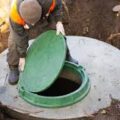A plumbing diverter is a device that controls the direction of water flow in a plumbing system. It is designed to redirect water from one outlet to another, providing flexibility and convenience. There are different types of plumbing diverters available, including two-way diverters and three-way diverters, each serving specific purposes.
Plumbing systems are vital for our everyday lives, enabling the distribution of water to various fixtures and appliances in our homes and businesses. Among the essential components of a plumbing system is the plumbing diverter. In this article, we will explore the significance of plumbing diverters, their functionality, benefits, installation, maintenance, and troubleshooting tips.
How Does a Plumbing Diverter Work?
Inside a plumbing diverter, there is an internal mechanism that allows water to be directed to different outlets. When the diverter is engaged, water is diverted to the desired location, such as switching between a showerhead and bathtub faucet. The mechanism can be operated manually or automatically, depending on the specific type of diverter.
Benefits of Using a Plumbing Diverter:
- Water conservation advantages: Plumbing diverters enable efficient water management by allowing you to use water only where it’s needed. This helps reduce water wastage and promotes eco-friendly practices.
- Convenience and versatility: With a plumbing diverter, you can easily switch between different fixtures or appliances, such as diverting water from a bathtub faucet to a showerhead, or redirecting water to a particular sprinkler zone in your garden.
- Cost-saving potential: By selectively using water through diverters, you can lower your water bills and reduce unnecessary consumption, contributing to long-term cost savings.
Installation and Maintenance of Plumbing Diverters
- Installing a plumbing diverter: Depending on the complexity of the installation, it can be a DIY project or require professional assistance. Consider the specific application and follow manufacturer instructions for proper installation.
- Regular maintenance practices: To ensure optimal performance, it’s important to clean and lubricate the diverter periodically. Additionally, inspect for any leaks, damage, or signs of wear and tear.
Troubleshooting Common Plumbing Diverter Issues
Despite their reliability, plumbing diverters may encounter issues over time. Here are some common problems and troubleshooting steps:
- Diverter failure signs and symptoms: Reduced water flow, leakage, or difficulty in switching between outlets.
- Possible causes of diverter problems: Mineral deposits, debris buildup, worn-out seals, or faulty internal components.
- Steps to troubleshoot and resolve common issues: Disassembling and cleaning the diverter, replacing damaged parts, or seeking professional help if needed.
Choosing the Right Plumbing Diverter for Your Needs:
When selecting a plumbing diverter, consider the following factors:
- Type and application: Determine whether you need a two-way or three-way diverter based on your specific requirements.
- Compatibility with existing plumbing system: Ensure the diverter is compatible with your current plumbing setup, including pipe sizes and fittings.
- Popular brands and models: Research reputable brands known for manufacturing high-quality plumbing diverters.
- Budget considerations: Set a budget and explore options within your price range without compromising on quality and reliability.
FAQs Section
The main purpose of a plumbing diverter is to control the flow of water in a plumbing system. It allows you to redirect water from one outlet to another, such as switching between a showerhead and bathtub faucet.
There are two main types of plumbing diverters: two-way diverters and three-way diverters. Two-way diverters can switch water flow between two outlets, while three-way diverters can redirect water between three outlets.
Plumbing diverters find common applications in showers, where they enable the transition between a showerhead and a handheld shower or bathtub faucet. They are also used in faucets, allowing you to switch between a regular stream of water and a spray function.
A plumbing diverter operates using an internal mechanism that controls the direction of water flow. When the diverter is engaged, it redirects water to the desired outlet, either by manually turning a handle or automatically through pressure-sensitive mechanisms.
Using a plumbing diverter offers several advantages, including water conservation by directing water only where needed, convenience in switching between fixtures, and potential cost savings by reducing water consumption.
Installing a plumbing diverter can vary in complexity. For simple installations, such as handheld shower diverters, you can often install them yourself using manufacturer instructions. However, for more complex installations or if you’re unsure, it’s best to consult a professional plumber.
Regular maintenance involves cleaning and lubricating the diverter to ensure smooth operation. Additionally, periodically inspect for leaks, damage, or signs of wear and tear, and address any issues promptly.
If you encounter issues with your plumbing diverter, such as reduced water flow or leakage, you can try troubleshooting steps like disassembling and cleaning the diverter or replacing damaged parts. If the problem persists, it’s advisable to seek professional help.
Recap of the importance and functionality of plumbing diverters
Plumbing diverters play a crucial role in efficient water management within plumbing systems. They offer flexibility, water conservation benefits, and cost savings. By understanding how they work, proper installation, regular maintenance, and troubleshooting techniques, you can ensure the smooth operation of your plumbing diverter. Embrace the advantages of plumbing diverters, and take control of water flow in your home or business for a more sustainable future.





